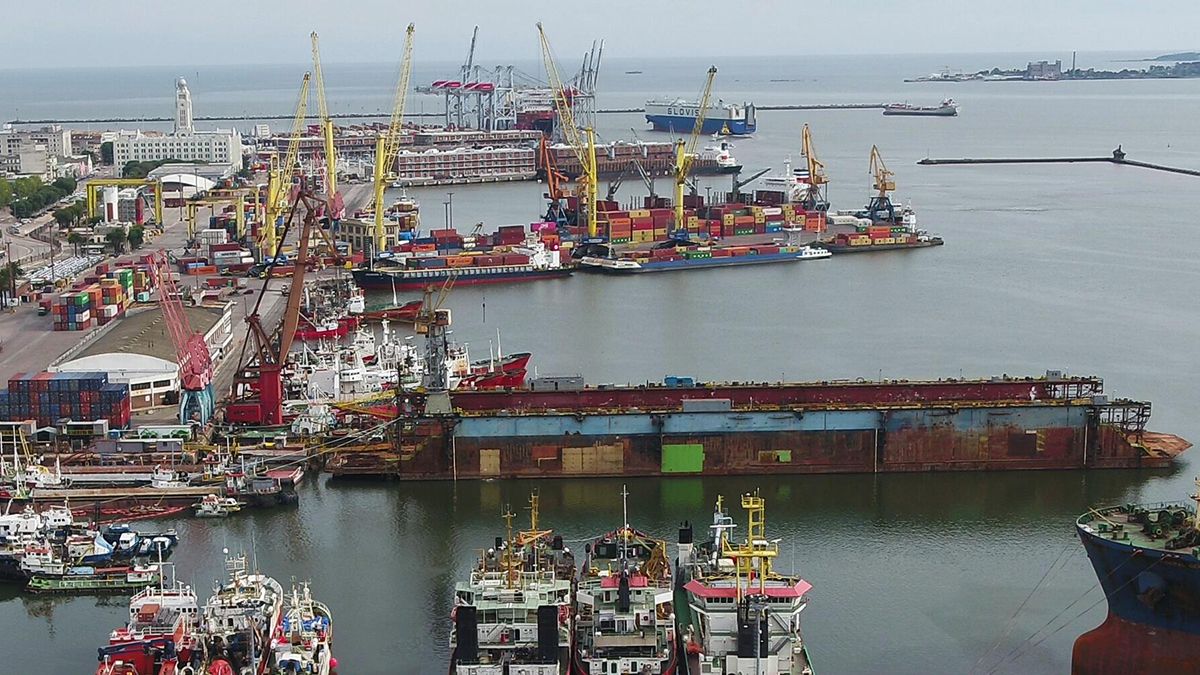He Port of Montevideo fell in the world ranking of ports prepared by the world Bank and the complaints of the exporting sectors are revived due to the efficiency and competitiveness from the main port terminal of Uruguay.
He world Bank posted an update Container Port Performance Index (CPPI) of 2023, in which it considered 405 ports around the world, taking into account efficiency, cost and space utilization, among other aspects. In this context, the Port of Montevideo was ranked 384th and was among the 25 worst in the world.
In this way, the main port terminal worsened its result from the previous year, when it was 304 out of 248, among the 50 worst; continuing the downward trend, while in the 2021 index, it had been located 265 out of a total of 370 ports surveyed.
At the regional level, meanwhile, it ranked 60th out of 64, only surpassing the Brazilian ports of Imbituba and Itajai, the one of Acajutla (El Salvador) and Kingston (Jamaica).
The best placed were Cartagena, who got first place; followed by Callao (Peru), Posorja (Ecuador), Buenaventura (Colombia), Rio de Janeiro (Brazil), Lázaro Cárdenas (Mexico), Salvador (Brazil), Puerto Limón (Costa Rica), Itapoa (Brazil) and Altamira (Mexico). While, Buenos Aires —the main competitor of the Uruguayan port— was ranked 33rd at the regional level and improved its position compared to the measurement corresponding to 2022, when it finished in 38th.
The keys of the World Bank and the complaints of exporters
According to the CPPI, the port infrastructure development High-quality and efficiently operated container shipping has been a prerequisite for successful export-oriented growth strategies. Therefore, countries that follow this line will have higher levels of growth compared to those that do not.
On the other hand, the world Bank warned that ports and terminals—especially container terminals—can cause delays in shipments, disruptions in the supply chain, additional expenses and reduce competitiveness.
The report also noted that optimal performance encompasses factors such as efficiency of the port, the draft necessary, the dock and the ease of docking and the effectiveness of the procedures used by public agencies for the dispatch of containers. Any inefficiencies or non-tariff barriers between these actors will result in higher costs, lower competitiveness and lower trade volumes.
Regarding these issues, the country’s export chambers have complained on multiple occasions, insisting on the negative effects that port inefficiency has on the already deteriorated competitiveness of the country’s foreign trade. In this sense, one of the main complaints is the high costs paid in the port terminals of Uruguay compared to the ports of the main competitors in the region, “up to three or four times more”, according to the Union of Exporters of Uruguay (UEU).
Yes ok Uruguay works to improve one of the central points for greater competitiveness—the deepening of the depth of the Port of Montevideobased on the agreement reached with Argentina and with a loan from Inter-American Development Bank (IDB)—, in parallel, complaints are usually registered about delays and inconveniences in the transportation of containers, which are also accompanied by the cost of tariffs.
In this regard, the UEU proposed the creation of a Port Services Regulatory Unitwith the objective that there is “effective control” when deciding increases.
The proposal was taken up within a detailed document in which it indicates an action route for the development of the export sector, aimed at the main presidential candidates from whom the next government will emerge, in the context of the campaign. The regulatory unit would have “control, inspection, complaint and sanction powers, which were not contemplated in the original project.”
Source: Ambito




